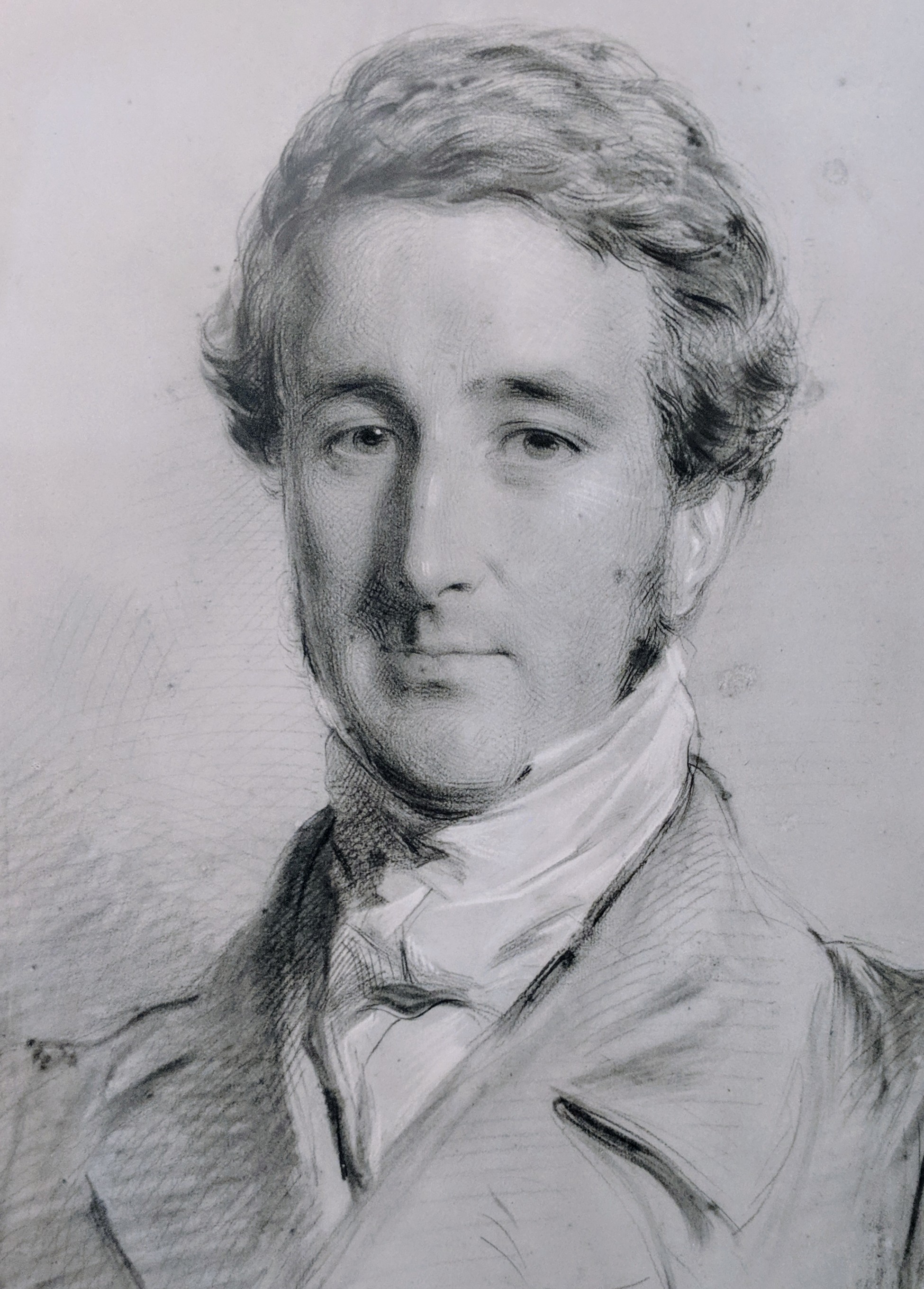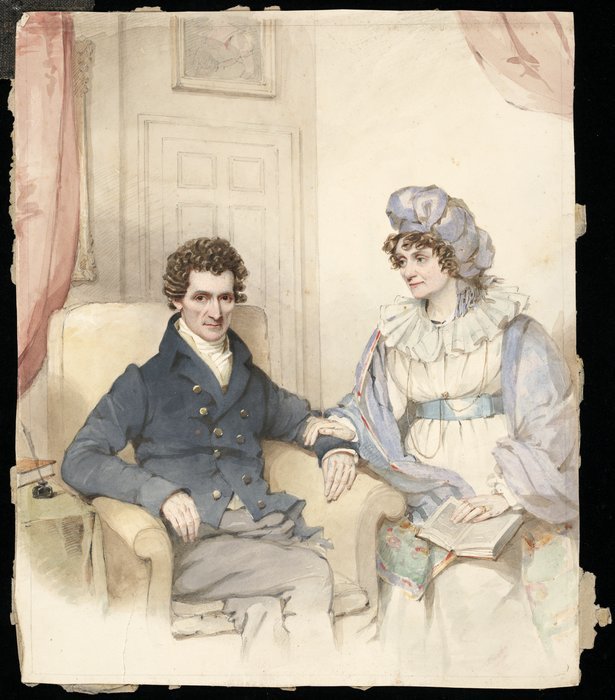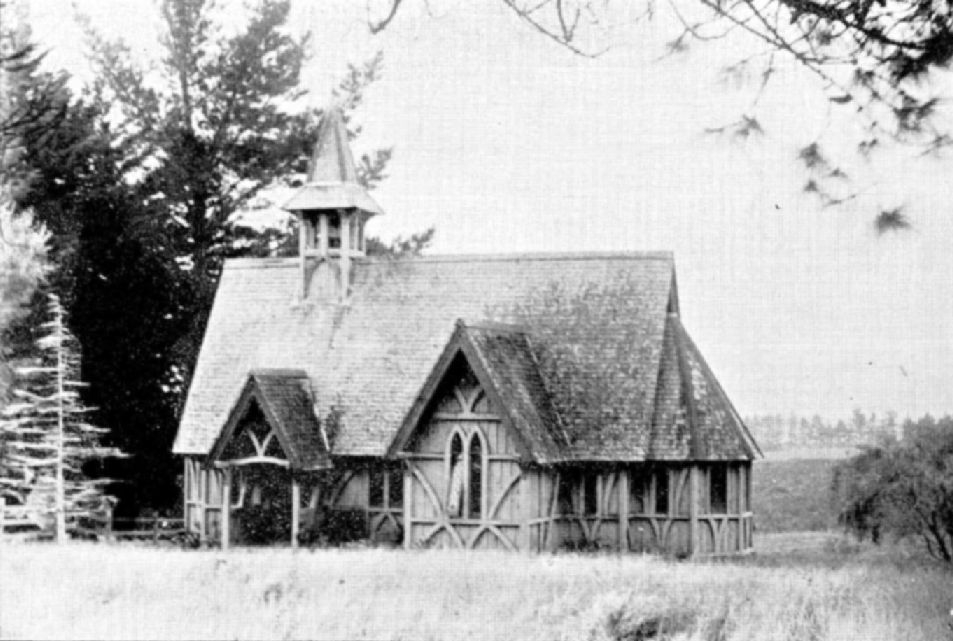|
William Martin (judge)
Sir William Martin (1807 – 18 November 1880) was the first Chief Justice of New Zealand, from 1841 until he resigned in 1857. Biography Originally from the family of the Martins of Long Melford, Suffolk, Martin was born in Birmingham. He was born in 1807 and baptised on 22 May 1807. He was educated at King Edward VI Grammar School, Eton, and St John's College, Cambridge. On 3 April 1841, he married Mary Ann Parker at St Ethelburga's Bishopsgate where her father was rector. He was appointed Chief Justice of the Colony of New Zealand by the Colonial Office in January 1841 (warrant under Royal sign manual 5 February 1841; sworn 10 January 1842), and arrived in New Zealand in August 1841. left, Mary Ann Martin and Sarah Selwyn">Mary_Martin_(teacher).html" ;"title="Caroline Abraham, Mary Martin (teacher)">Mary Ann Martin and Sarah Selwyn He worked in New Zealand with Henry Samuel Chapman, who in 1843 was appointed Judge for New Munster Province, New Munster, the southern ... [...More Info...] [...Related Items...] OR: [Wikipedia] [Google] [Baidu] |
The Honourable
''The Honourable'' (British English) or ''The Honorable'' ( American English; see spelling differences) (abbreviation: ''Hon.'', ''Hon'ble'', or variations) is an honorific style that is used as a prefix before the names or titles of certain people, usually with official governmental or diplomatic positions. Use by governments International diplomacy In international diplomatic relations, representatives of foreign states are often styled as ''The Honourable''. Deputy chiefs of mission, , consuls-general and consuls are always given the style. All heads of consular posts, whether they are honorary or career postholders, are accorded the style according to the State Department of the United States. However, the style '' Excellency'' instead of ''The Honourable'' is used for ambassadors and high commissioners. Africa The Congo In the Democratic Republic of the Congo, the prefix 'Honourable' or 'Hon.' is used for members of both chambers of the Parliament of the Democratic R ... [...More Info...] [...Related Items...] OR: [Wikipedia] [Google] [Baidu] |
Henry Samuel Chapman
Henry Samuel Chapman (21 July 1803 – 27 December 1881) was an Australian and New Zealand judge, colonial secretary, attorney-general, journalist and politician. Early life Chapman was born at Kennington, London, the son of Henry Chapman, English civil servant, and his wife Ann, daughter of Rev. Thomas Hart Davies. Chapman was educated privately at Bromley, Kent. In 1818, he entered a bank, then in 1823 emigrated to Quebec, Canada where he went into business as a commission merchant. In 1833 he started the first Canadian daily newspapers, the radical ''Montreal Daily Advertiser'', in association with Samuel Revans. In 1835, Chapman returned to England as a salaried intermediary between the Legislative Assembly of Lower Canada and its friends in the House of Commons of the United Kingdom. Chapman remained in England for some time and took up the study of law, being admitted to the bar of the Middle Temple in 1840. Five years earlier he had published ''The Act for the Regulat ... [...More Info...] [...Related Items...] OR: [Wikipedia] [Google] [Baidu] |
Charles Abraham (bishop Of Wellington)
Charles John Abraham (18144 February 1903) was the first Anglican Bishop of Wellington. He married Caroline Palmer who became a noted artist.Caroline Harriet Palmer NZ encyclopedia, retrieved 28 June 2014 
Life Born in 1814, the son of the late captain Abraham, of Farnborough, Hampshire, he was educated at[...More Info...] [...Related Items...] OR: [Wikipedia] [Google] [Baidu] |
Sarah Selwyn
Sarah Harriet Selwyn ( Richardson; 2 September 1807 – 24 March 1907) was the wife of George Augustus Selwyn, the first Anglican bishop of New Zealand and later of Lichfield. Often left behind to manage missionary stations while her husband travelled throughout New Zealand and the islands of the western Pacific Ocean, Sarah Selwyn contributed to the work of building the hierarchy of the Church of England in New Zealand from 1841 to 1868. Her humanitarian idealism as well as her own personal experiences among the Māori people fuelled her criticism of British and New Zealand policy. Together with Mary Ann Martin and Caroline Abraham, Sarah Selwyn contributed her private correspondence for a publication protesting at the British colonial policies of land confiscation and military conquests against the Māori in New Zealand. Early life Sarah Harriet Selwyn was born 2 September 1807 in Wanlip, Leicestershire, England, at the childhood home of her mother Lady Harriet Richardso ... [...More Info...] [...Related Items...] OR: [Wikipedia] [Google] [Baidu] |
Knight Bachelor
The title of Knight Bachelor is the basic rank granted to a man who has been knighted by the monarch but not inducted as a member of one of the organised orders of chivalry; it is a part of the British honours system. Knights Bachelor are the most ancient sort of British knight (the rank existed during the 13th-century reign of King Henry III), but Knights Bachelor rank below knights of chivalric orders. A man who is knighted is formally addressed as "Sir irst Name urname or "Sir irst Name and his wife as "Lady urname. Criteria Knighthood is usually conferred for public service; amongst its recipients are all male judges of His Majesty's High Court of Justice in England. It is possible to be a Knight Bachelor and a junior member of an order of chivalry without being a knight of that order; this situation has become rather common, especially among those recognized for achievements in entertainment. For instance, Sir Michael Gambon, Sir Derek Jacobi, Sir Anthony Hopkins ... [...More Info...] [...Related Items...] OR: [Wikipedia] [Google] [Baidu] |
First Taranaki War
The First Taranaki War (also known as the North Taranaki War) was an armed conflict over land ownership and sovereignty that took place between Māori and the New Zealand government in the Taranaki district of New Zealand's North Island from March 1860 to March 1861. The war was sparked by a dispute between the government and Māori landowners over the sale of a property at Waitara, but spread throughout the region. It was fought by more than 3,500 imperial troops brought in from Australia, as well as volunteer soldiers and militia, against Māori forces that fluctuated between a few hundred and about 1,500. Total losses among the imperial, volunteer and militia troops are estimated to have been 238, while Māori casualties totalled about 200, although the proportion of Māori casualties was higher. The war ended in a ceasefire, with neither side explicitly accepting the peace terms of the other. Although there were claims by the British that they had won the war, there were ... [...More Info...] [...Related Items...] OR: [Wikipedia] [Google] [Baidu] |
Treaty Of Waitangi
The Treaty of Waitangi ( mi, Te Tiriti o Waitangi) is a document of central importance to the History of New Zealand, history, to the political constitution of the state, and to the national mythos of New Zealand. It has played a major role in the treatment of the Māori population in New Zealand, by successive governments and the wider population, a role that has been especially prominent from the late 20th century. The treaty document is an agreement, not a treaty as recognised in international law and it has no independent legal status, being legally effective only to the extent it is recognised in various statutes. It was first signed on 6 February 1840 by Captain William Hobson as Administrative consul, consul for the British The Crown, Crown and by Māori people, Māori chiefs () from the North Island of New Zealand. The treaty was written at a time when the New Zealand Company, acting on behalf of large numbers of settlers and would-be settlers, were establishing a colo ... [...More Info...] [...Related Items...] OR: [Wikipedia] [Google] [Baidu] |
St John’s College (New Zealand)
The College of St John the Evangelist or St Johns Theological College, is the residential theological college of the Anglican Church in Aotearoa, New Zealand and Polynesia. The site at Meadowbank in Auckland is the base for theological education for the three Tikanga of the Province with ministry formation onsite as well as diploma level teaching in the regions across New Zealand and Polynesia. The College has partnerships with various other tertiary providers of degrees in theology. The College celebrates our diversity as a people of faith honouring varied histories, traditions, and links with Anglican communities both within this Province and beyond. St Johns is proud to have faculty and alumni of the College working around the globe. The College was established in 1843 by George Augustus Selwyn, Bishop of New Zealand, initially at Te Waimate mission. The College, through the St John's College Trust Board, is one of the best endowed theological colleges in the Anglican C ... [...More Info...] [...Related Items...] OR: [Wikipedia] [Google] [Baidu] |
George Selwyn (bishop Of Lichfield)
George Augustus Selwyn (5 April 1809 – 11 April 1878) was the first Anglican Bishop of New Zealand. He was Bishop of New Zealand (which included Melanesia) from 1841 to 1869. His diocese was then subdivided and Selwyn was Metropolitan (later called Primate) of New Zealand from 1858 to 1868. Returning to Britain, Selwyn served as Bishop of Lichfield from 1868 to 1878. After his death, Selwyn College, Cambridge and Selwyn College, Otago were founded to honour his life and contribution to scholarship and the church. The colleges and other educational facilities uphold the legacy of the bishop. Early years Selwyn was born at Church Row, Hampstead, the second son of William Selwyn (1775–1855) and of Laetitia Frances Kynaston. At the age of seven he went to Great Ealing School, the school of Nicholas, where the future Cardinal Newman and his brother Francis were among his schoolfellows. He then went to Eton, where he distinguished himself, both as scholar and as athlete, and k ... [...More Info...] [...Related Items...] OR: [Wikipedia] [Google] [Baidu] |
Outhwaite Family, Auckland
The Outhwaite family were early settlers in Auckland, New Zealand and were a prominent family in Auckland in the first 85 years of the city's existence. They made substantial contributions to the legal, administrative, musical, literary, artistic, social and sporting life of the city. They were also important in the establishment and growth of the Catholic Church in Auckland and through their social and philanthropic activities. Their influence still continues, especially in respect of their donation of two areas of land in the central Auckland suburb of Grafton which are now Outhwaite Park and St Peter's College. The family also enabled the creation of a conservation reserve in the Hen and Chicken Islands. Thomas Outhwaite Thomas Outhwaite was born at Ormside Hall in Westmorland in 1805 and later lived in Preston. He practised as a solicitor in Paris before coming to New Zealand in 1841 on the ship, ''the Tyne'', with the first Chief Justice of New Zealand, the Hon Sir William ... [...More Info...] [...Related Items...] OR: [Wikipedia] [Google] [Baidu] |
William Swainson (lawyer)
William Swainson (25 April 1809 – 1 December 1884) became the second, and last, Attorney-General of the Crown colony of New Zealand and instrumental in setting up the legal system of New Zealand. He was the first Speaker of the New Zealand Legislative Council. Early life Swainson was born in Lancaster, England on 25 April 1809 and educated in Lancaster Grammar School. His legal education was in Middle Temple and he was called to the bar in 1838. HMS ''Tyne'' He worked in conveyancing for only a few years, and with this relatively little experience was appointed to be Attorney-General of New Zealand in 1841. The ship HMS ''Tyne'' left England taking Swainson and two other prominent figures in the future of New Zealand law, the Hon Sir William Martin, who was to become the first Chief Justice, and Thomas Outhwaite, who was to become Registrar of the Supreme Court in Auckland, to New Zealand. On the ship the three men began to draft "in simple, concise and intelligible langu ... [...More Info...] [...Related Items...] OR: [Wikipedia] [Google] [Baidu] |
Attorney-General (New Zealand)
The Attorney-General is a political and legal officer in New Zealand. The Attorney-General is simultaneously a ministerial position and the chief law officer of the Crown, and has responsibility for supervising New Zealand law and advising the government on legal matters. The Attorney-General serves both a political and apolitical function. The current Attorney-General is David Parker. Responsibilities and powers The Attorney-General has two main areas of official responsibility. Firstly, the Attorney-General has ministerial jurisdiction over the Crown Law Office, the Parliamentary Counsel Office, and the Serious Fraud Office.''Briefing Paper for the Attorney-General'' (Crown Law Office, October 2017) at 3. Secondly, the Attorney-General is the principal law officer of the Crown, responsible for supervising the state's administration of the law and for providing legal advice to the government. This includes upholding the rule of law and advising on compliance with internati ... [...More Info...] [...Related Items...] OR: [Wikipedia] [Google] [Baidu] |






